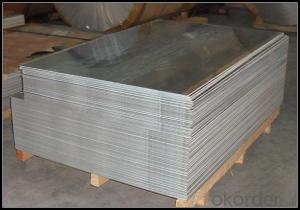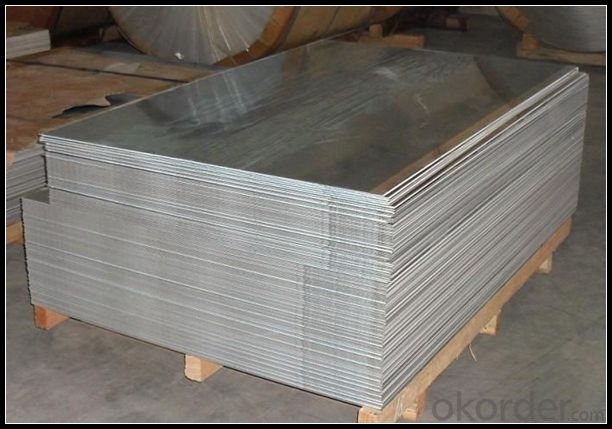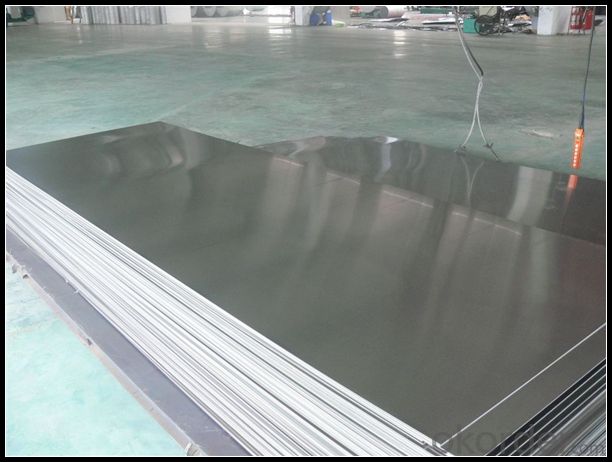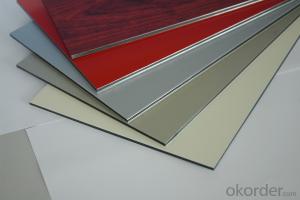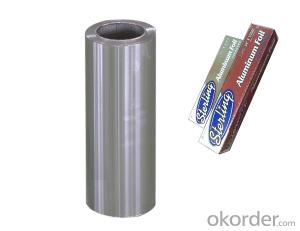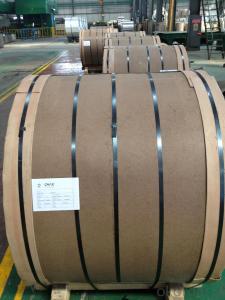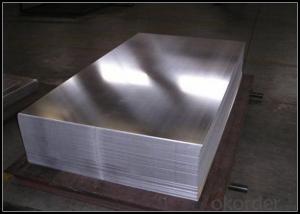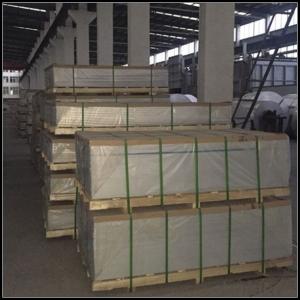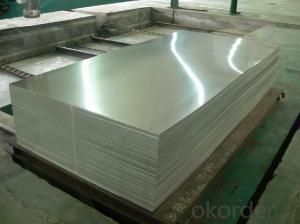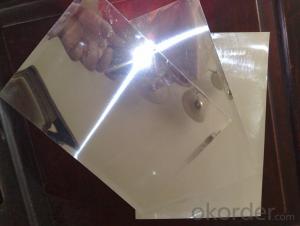Mill Finish Aluminum Sheets 5xxx Series Alloy for Automotive Body - Sacramento
- Loading Port:
- Shanghai
- Payment Terms:
- TT OR LC
- Min Order Qty:
- 5 m.t.
- Supply Capability:
- 10000 m.t./month
OKorder Service Pledge
OKorder Financial Service
You Might Also Like
Specification
1. Specification of Mill Finish Aluminium Sheet 5XXX Series Alloy for Automotive Body
ALLOY | AA1050 AA1060 AA1070 AA1100 ETC AA3003 AA3004 AA3005 AA3104 AA3105 ETC AA5005 AA5052 AA5083 AA5754 ETC AA8011 AA8006 AA8079 ETC |
TEMPER | H14,H16,H18,H22,H24,H26,H32,O/F |
THICKNESS | ≥0.2MM |
WIDTH | 30mm-2100mm |
COIL WGT | 2Mt - 3Mt |
COIL ID | φ508mm,φ610mm |
SURFACE | PE Protecting film |
STANDARD | GB/T 3880-2006 |
2. Application of Mill Finish Aluminium Sheet 5XXX Series Alloy for Automotive Body
(1).Interior: wall cladding, ceilings, bathrooms, kitchens and balconies, shutters, doors...
(2).Exterior: wall cladding, facades, roofing, canopies, tunnels,column covers , renovations...
(3).Advertisement: display platforms, signboards, fascia, shop fronts...
3. Feature of Mill Finish Aluminium Sheet 5XXX Series Alloy for Automotive Body
Surfact Quality :
Be free from Oil Stain, Dent, Inclusion, Scratches, Stain, Oxide Dicoloration, Breaks, Corrosion, Roll Marks, Dirt Streaks and other defect which will interfere with use,
Mechenical Property:
Chemical Composite and Mechanical Property
4. Certificate:
SGS and ROHS(if client request, paid by client), MTC(plant provided), Certificate of Origin(FORM A, FORM E, CO), Bureau Veritas and SGS (if client request, paid by client), CIQS certificate
5. Image of Mill Finish Aluminium Sheet 5XXX Series Alloy for Automotive Body
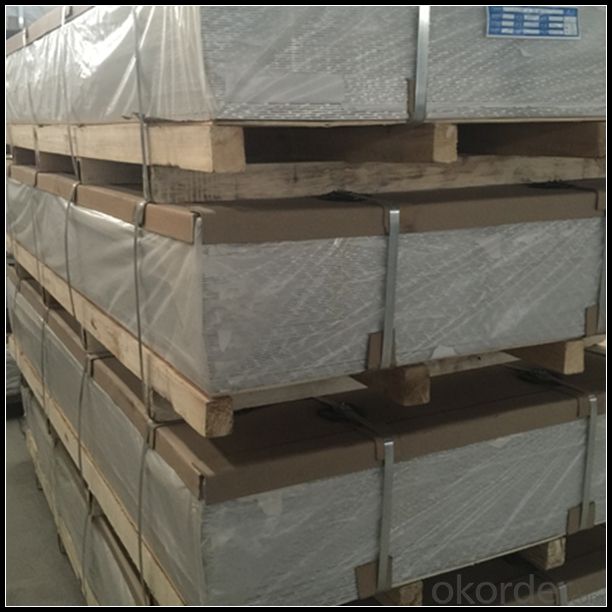
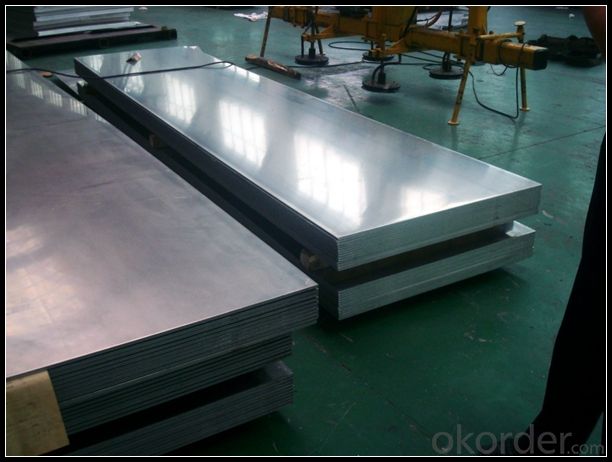
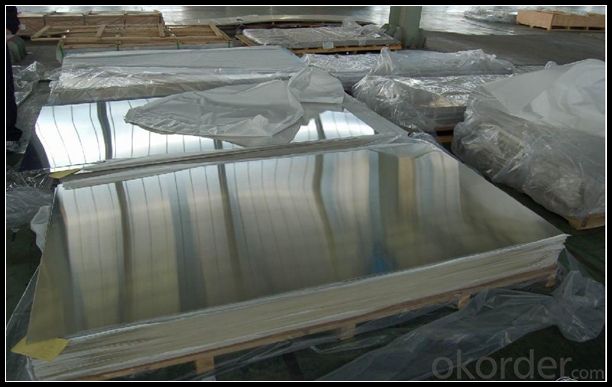
6. Package and shipping of Embossed Aluminium Sheet AA1100 for Automotive Body
First, plastic cloth with drying agent inside; Second, Pearl Wool ; Third, wooden cases with dry agent , fumigation wooden pallets, aluminum surface could cover blue PVC film
7. FAQ
1) What is the delivery time?
Dpends on actual order, around 20 to 35 days
2)What is the QC system:
We have QC staff of 20 persons and advanced equipment, each production is with MTC traced from Aluminum ingot lot.
3) What market do you mainly sell to?
Australia, America, Asia, Middle East, Western Europe, Africa etc
- Q: How to distinguish aluminum sheet from magnesium sheet?
- put them into NaOH, the one generating bubble is aluminum sheet, because aluminum sheet can react with it, generating hydrogen. Or light them in the air, the burning one is magnesium sheet.
- Q: Can aluminum sheets be used as heat shields?
- Aluminum sheets are capable of being used as heat shields. The reason for this is that aluminum possesses exceptional thermal conductivity, enabling it to effectively conduct and transfer heat away from its source. Moreover, aluminum exhibits a high melting point, which enables it to endure high temperatures without distorting or warping. These characteristics render aluminum sheets an optimal selection for heat shield purposes, which encompass safeguarding delicate components and structures from heat-related harm in various industries such as automotive, aerospace, and industrial sectors. Additionally, aluminum is lightweight and comparatively easy to mold, which makes it a practical alternative for heat shields that necessitate installation in confined areas or intricate designs. In summary, utilizing aluminum sheets as heat shields provides efficient thermal protection while offering durability, versatility, and cost-effectiveness.
- Q: How do you join aluminum sheets together?
- There are several methods to join aluminum sheets together, depending on the specific application and desired strength of the joint. Here are some common techniques: 1. Welding: Aluminum can be welded using various methods such as gas tungsten arc welding (GTAW or TIG), gas metal arc welding (GMAW or MIG), or even laser welding. These processes involve melting the aluminum at the joint and adding a filler material to create a strong bond. Welding offers excellent strength and durability but requires skill and appropriate equipment. 2. Riveting: Rivets can be used to fasten aluminum sheets together. This method involves drilling holes through the sheets and using a rivet gun to insert and deform a rivet, creating a secure joint. Riveting is relatively simple and quick, but it may not provide the same strength as welding. 3. Adhesive bonding: Industrial adhesive bonding is a popular method to join aluminum sheets. Specialized adhesives formulated for aluminum bonding are applied to the surfaces, which then cure and form a strong bond. Adhesive bonding is advantageous as it distributes stress evenly and can join dissimilar materials. However, it may not be suitable for high-temperature or high-stress applications. 4. Mechanical fasteners: Screws, bolts, or nuts can be used to fasten aluminum sheets together. This method involves drilling holes and using fasteners to secure the sheets. Mechanical fasteners provide good strength and allow for disassembly if needed. However, they may require additional maintenance and can cause stress concentrations around the holes. 5. Clinching: Clinching is a cold joining method where aluminum sheets are pressed together using a punch and die. The process deforms the materials and creates a mechanical interlock, forming a strong joint. Clinching is a quick and cost-effective method, but it may not be suitable for thin or highly rigid sheets. Ultimately, the choice of joining method depends on factors such as the required strength, aesthetics, cost, and ease of fabrication. It is recommended to consult with a qualified professional or follow specific guidelines to ensure a successful and reliable joint.
- Q: So my new farrier comes out tomorrow and charges $20 more for aluminum shoes and I was wondering why that is? Is one better than the other? My horse is a TB hunter jumper. Tell me what you think :)
- Aluminum has no wearability. Steel shoes can be re-set a number of times, which can save you money. If you ride your horse out on trails at all, you'll go through shoes like crazy. Aluminum is such soft metal that it's really not practical for most horses.
- Q: Are aluminum sheets resistant to rust?
- Indeed, the resistance of aluminum sheets to rust is remarkably high. This is due to the natural formation of a protective oxide layer on the surface of aluminum when it comes into contact with air, thereby hindering further corrosion. In contrast to iron or steel that can rust in the presence of moisture and oxygen, aluminum does not necessitate any supplementary coatings or treatments to safeguard against rust formation. Consequently, aluminum sheets are widely favored across various sectors such as construction, automotive, and marine industries, where the prevention of rust is imperative.
- Q: This question asks about the various applications of aluminum sheets within the construction industry.
- <p>Aluminum sheets are widely used in construction for their durability, lightweight, and resistance to corrosion. They are commonly used for roofing and cladding due to their ability to withstand harsh weather conditions. Aluminum sheets are also used in the manufacturing of window frames and doors because of their strength and thermal insulation properties. Additionally, they are utilized in the construction of scaffolding and temporary structures due to their ease of assembly and disassembly. In interior design, aluminum sheets can be used for decorative purposes, such as wall panels and ceilings. Their recyclability also makes them an environmentally friendly choice for construction projects.</p>
- Q: Could you tell me the difference between the 6063 aluminum plate and the 5052 aluminum plate?
- 6063 and 5052 alike: aluminum alloys with Mg Mg as the main alloying elementThe difference is that, in addition to the magnesium Mg element, there is also a silicon Si element in the 6063 aluminum plate. The strength is slightly better than that of 5052
- Q: How do aluminum sheets perform in terms of chemical resistance?
- Aluminum sheets generally have good chemical resistance properties. However, their performance can vary depending on the specific chemical environment and conditions. Aluminum is known to have excellent resistance to corrosion from most acids, alkalis, and organic solvents. It forms a protective oxide layer on its surface, which prevents further reaction with many chemicals. However, aluminum can be susceptible to corrosion in certain aggressive environments, such as strong acids like hydrochloric acid or sulfuric acid, and alkaline solutions with high pH levels. In these cases, the protective oxide layer may break down, leading to the degradation of the aluminum surface. Additionally, some chemicals, like mercury and certain salts, can also cause localized corrosion or pitting on aluminum surfaces. Therefore, it is important to consider the specific chemicals and concentrations that the aluminum sheets will be exposed to when assessing their chemical resistance performance. To enhance the chemical resistance of aluminum sheets, various surface treatments, coatings, or alloys can be applied. These modifications can provide additional protection against specific chemicals or environmental conditions, further improving the overall chemical resistance properties of aluminum sheets. In summary, aluminum sheets generally exhibit good chemical resistance, but their performance can be influenced by the specific chemical environment and conditions. It is advisable to assess the compatibility of aluminum with the intended chemicals and consider appropriate surface treatments or coatings if necessary.
- Q: This question asks about the typical duration an aluminum roof sheet can last before it needs to be replaced or repaired.
- <p>The lifespan of aluminum sheets for roofing can vary depending on the quality of the material, installation, and environmental factors. On average, a well-maintained aluminum roof can last between 20 to 50 years. High-quality aluminum roofing materials, when properly installed, can even exceed this range, offering a lifespan of up to 70 years. However, it's important to note that regular inspections and maintenance are crucial to extend the life of any roofing material, including aluminum.</p>
- Q: What are the advantages of using aluminum sheets over other materials?
- Using aluminum sheets offers several advantages compared to other materials. Firstly, aluminum is lightweight, making it easier to handle and transport than heavier materials like steel. This convenience is especially beneficial in industries where weight reduction is important. Secondly, aluminum sheets have a high strength-to-weight ratio. Despite being lightweight, they can withstand heavy loads and impacts, making them ideal for construction, aerospace, and automotive industries that require durability and structural integrity. Additionally, aluminum is highly resistant to corrosion. It forms a protective oxide layer that prevents rust and corrosion, even in harsh environments. This makes it suitable for outdoor applications, such as building facades, roofing, and marine structures, where exposure to moisture and other corrosive elements is a concern. Moreover, aluminum is highly malleable, allowing it to be easily shaped into various forms and sizes. It can be rolled into thin sheets or extruded into complex profiles, offering design flexibility for different applications. This versatility makes aluminum sheets adaptable in a wide range of industries, including manufacturing, architecture, and transportation. Furthermore, aluminum is a sustainable and recyclable material. It has a relatively low melting point, requiring less energy to recycle compared to other materials. This makes aluminum sheets a more sustainable choice, promoting environmental conservation and reducing the carbon footprint. In conclusion, the advantages of using aluminum sheets over other materials include their lightweight nature, high strength-to-weight ratio, corrosion resistance, malleability, and sustainability. These properties make aluminum sheets an excellent choice for various applications where performance, durability, and environmental considerations are essential.
Send your message to us
Mill Finish Aluminum Sheets 5xxx Series Alloy for Automotive Body - Sacramento
- Loading Port:
- Shanghai
- Payment Terms:
- TT OR LC
- Min Order Qty:
- 5 m.t.
- Supply Capability:
- 10000 m.t./month
OKorder Service Pledge
OKorder Financial Service
Similar products
Hot products
Hot Searches
Related keywords
